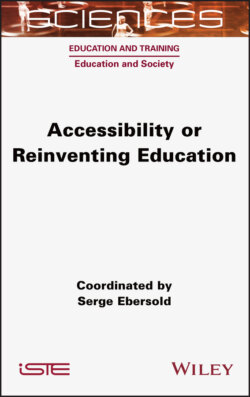Читать книгу Accessibility or Reinventing Education - Группа авторов - Страница 23
1.6. Conclusion
ОглавлениеFrom a necessity linked to the enrollment in mainstream settings of people with disabilities, accessibility has become an imperative imposed by the changes brought about by the advent of a knowledge-based society. This imperative has given rise to new interpretations of social justice, focusing primarily on the inequities of a society where inaccessibility hinders opportunities for social participation. It also reconfigures the legitimacy of the school institution: rather than the normative concept of the pedagogy of the school born of the wage society, it prefers a post-disciplinary concept that postulates the cognitive autonomy of every pupil and finds its raison d’être in making school environments accessible to the many while being adapted to each individual (Ebersold 2017). Its implementation is based on the articulation of three complementary approaches to accessibility: a universal one that aims to create a context favorable to consideration of the cognitive and social heterogeneity of pupils in the classroom through heterogeneous teaching strategies conducive to the implementation of differentiated knowledge appropriation processes; an integrated approach to accessibility that aims to prevent school failure and dropout through the mobilization of specific personalization systems by schools; and a corrective approach to accessibility that supports individual pupils for whom the systems are unsuitable through the intervention of specialists who support school stakeholders in the implementation of individual education plans drawn up by a multi-disciplinary team on the basis of needs identification. The ways in which these three approaches are articulated depend on the organizational and functional anchoring of accessibility, which legitimizes taking into account the diversity of pupils’ educational profiles. This anchoring is the result of the concepts established by school projects, the normative reference frameworks drawn up to implement them, and the managerial strategies adopted to ensure that everyone is involved in achieving these objectives. These conventions are part of the orchestration of accessibility, that is, the symbolic and practical environment built by the actors to define the practical conditions of implementing the principles of the accessibility imperative (Ebersold and Armagnague 2017).
